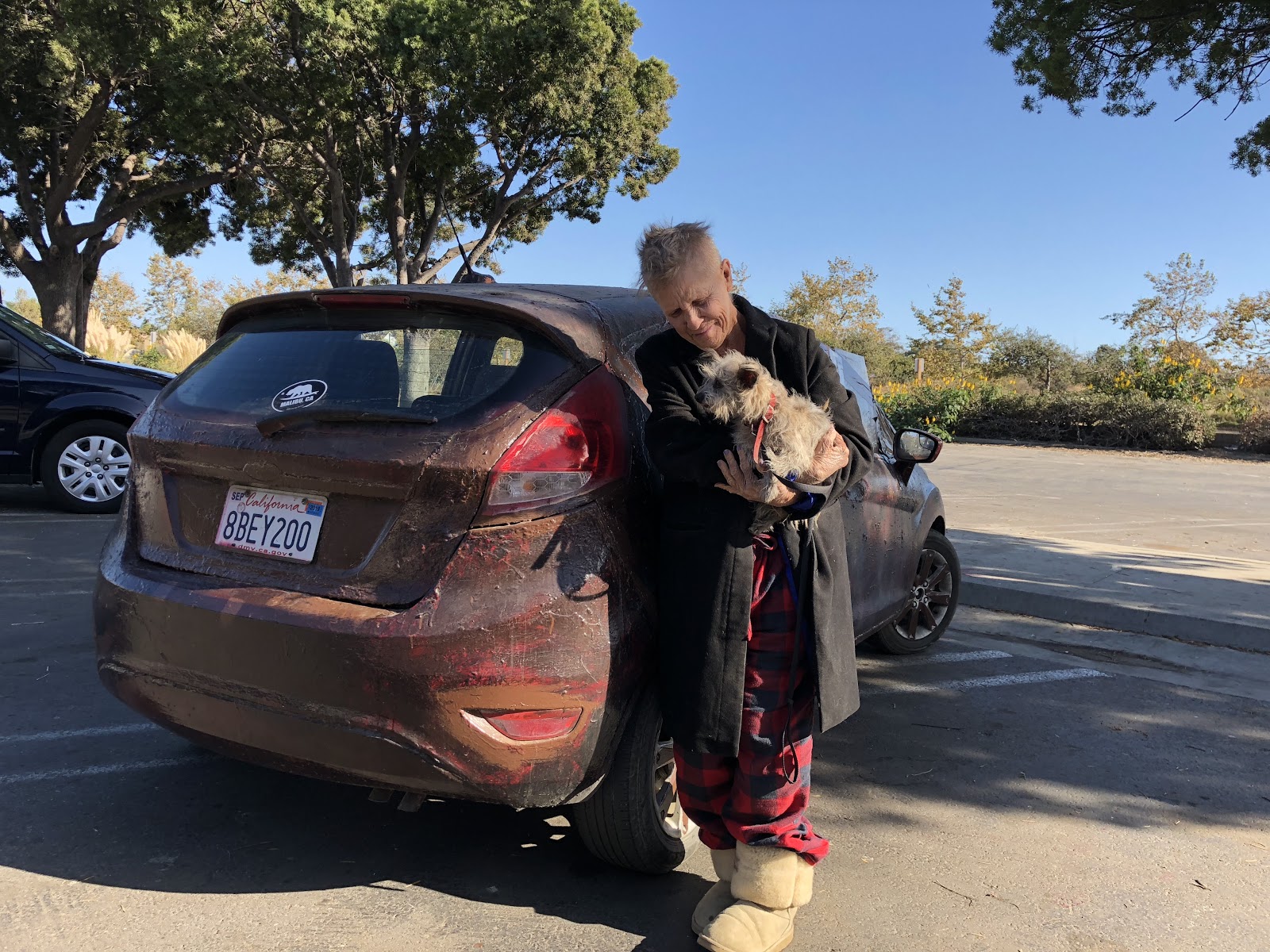Assertive Engagement with Unsheltered Patients
Figure 21. A woman living unsheltered in Malibu shows off her companion. Taken by Dr. Coley King of Venice Family Clinic.
Dr. Jim O’Connell of Boston Healthcare for the Homeless recalls wisdom imparted to him by his mentor, Barbara McGinnis:
Nothing changes in the life of a homeless person unless you slow down and take the time to earn trust and develop a lasting relationship. Consistency and presence are essential…share bits of yourself. Never judge. Remember that people have lived through hell and listen carefully to their stories. With that as bedrock, delivering health care might just be possible.32
Dr. King teaches that “the engagement process can take two seconds to two years.”
Untreated mental illness and co-occurring disorders can influence the length of time in establishing a trusting patient-clinician relationship and may require use of assertive engagement.34
The components of assertive engagement include:
- Performing direct outreach to each person where they are geographically.
- Being useful to the patient (from their perspective).
- Building relationships through empathy.
- Identifying the patient’s strengths and goals.
- Exploring what gives each person meaning and a guiding purpose.
- Honoring their choices.
- Becoming a consistent presence.
- Engaging patients in making informed choices about their lives.
- Discussing lack of choices in situations where warranted.
- Demonstrating flexibility—if a person does not want to talk and wants to leave, remain polite, say goodbye, and ask if you may meet again.
- Engaging in a non-threatening manner.
- Avoiding controversial topics at initial engagement.
- Allowing the patient to set limits and exercise control in the interaction.
- Striking a balance between communicating an interest in or concern about the person without engendering fear or distrust.
- Communicating your role clearly.
- Responding to the patient’s medical issues as a vehicle for engagement.
